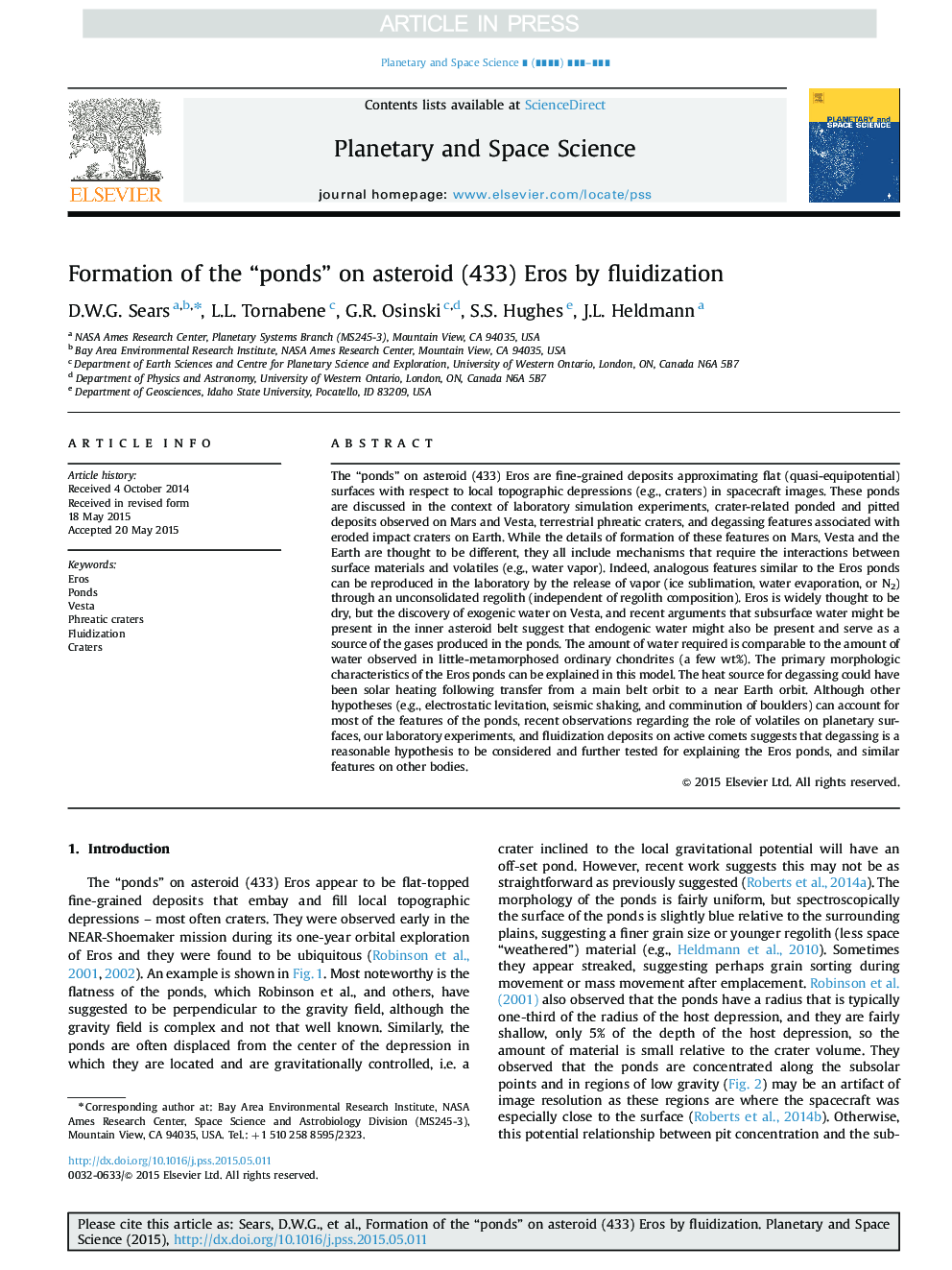| کد مقاله | کد نشریه | سال انتشار | مقاله انگلیسی | نسخه تمام متن |
|---|---|---|---|---|
| 8143041 | 1523923 | 2015 | 13 صفحه PDF | دانلود رایگان |
عنوان انگلیسی مقاله ISI
Formation of the “ponds” on asteroid (433) Eros by fluidization
دانلود مقاله + سفارش ترجمه
دانلود مقاله ISI انگلیسی
رایگان برای ایرانیان
موضوعات مرتبط
مهندسی و علوم پایه
علوم زمین و سیارات
فیزیک زمین (ژئو فیزیک)
پیش نمایش صفحه اول مقاله

چکیده انگلیسی
The “ponds” on asteroid (433) Eros are fine-grained deposits approximating flat (quasi-equipotential) surfaces with respect to local topographic depressions (e.g., craters) in spacecraft images. These ponds are discussed in the context of laboratory simulation experiments, crater-related ponded and pitted deposits observed on Mars and Vesta, terrestrial phreatic craters, and degassing features associated with eroded impact craters on Earth. While the details of formation of these features on Mars, Vesta and the Earth are thought to be different, they all include mechanisms that require the interactions between surface materials and volatiles (e.g., water vapor). Indeed, analogous features similar to the Eros ponds can be reproduced in the laboratory by the release of vapor (ice sublimation, water evaporation, or N2) through an unconsolidated regolith (independent of regolith composition). Eros is widely thought to be dry, but the discovery of exogenic water on Vesta, and recent arguments that subsurface water might be present in the inner asteroid belt suggest that endogenic water might also be present and serve as a source of the gases produced in the ponds. The amount of water required is comparable to the amount of water observed in little-metamorphosed ordinary chondrites (a few wt%). The primary morphologic characteristics of the Eros ponds can be explained in this model. The heat source for degassing could have been solar heating following transfer from a main belt orbit to a near Earth orbit. Although other hypotheses (e.g., electrostatic levitation, seismic shaking, and comminution of boulders) can account for most of the features of the ponds, recent observations regarding the role of volatiles on planetary surfaces, our laboratory experiments, and fluidization deposits on active comets suggests that degassing is a reasonable hypothesis to be considered and further tested for explaining the Eros ponds, and similar features on other bodies.
ناشر
Database: Elsevier - ScienceDirect (ساینس دایرکت)
Journal: Planetary and Space Science - Volume 117, November 2015, Pages 106-118
Journal: Planetary and Space Science - Volume 117, November 2015, Pages 106-118
نویسندگان
D.W.G. Sears, L.L. Tornabene, G.R. Osinski, S.S. Hughes, J.L. Heldmann,